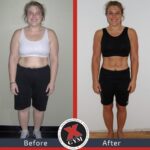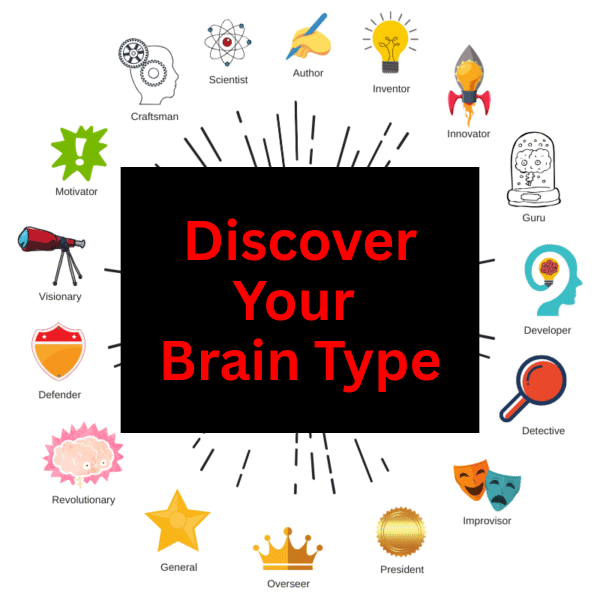By 2035, advancements in AI, biotechnology, nanotechnology, and personalized analytics will transform health and wellness from generic routines into hyper-customized, data-driven lifestyles. Drawing from current trends and projections, this post outlines a comprehensive vision of emerging technologies, starting with core ideas and expanding into a holistic ecosystem that could redefine the industry.
Note: This document will be updated as I become aware of and develop additional ideas and concepts, so check back regularly.
AI-Powered Robotic Personal Trainers
Robot personal trainers will become integral to gyms and homes, evolving beyond today’s apps into autonomous humanoid systems with soft robotics for safety. Using computer vision, LiDAR, and haptic sensors, they’ll assess form (“Phorm” precision), spot during lifts with exoskeletons or magnetic assistance, and adapt programs based on biometrics, genetics, and mood. At X Gym, they will sync with inventions like our winch machine for hybrid sessions, while holographic AR versions enable scalable coaching. This won’t be for everyone, though, as some people will prefer the human connection, so the AI robot will only be an assistant. Even if the room is full of robotic trainers, a human will still need to be present to connect with people and oversee the entire operation.
Robot personal trainers will first appear at traditional gyms because they will be easiest to train there. Since it will only be a matter of spotting, form, and counting sets and reps, their programming will be quick and easy. At the X Gym, however, it will be a very different story because they will have to learn all 7 of our methods, 30 splinter techniques, fatigue intuition, our TUT and CMF principles, our unique exercises and machines invented in-house, decimal counting, and much more.
AI-Powered Personalized Nutrition, Health, and Anti-Aging Coaching
The X Gym website already has an AI page where members can visit to “ask PJ” any question on health, fitness, nutrition, and anti-aging topics. This “bot” answers questions based on PJ’s book and hundreds of blog posts from over the years, allowing members to ask questions 24/7/365 and receive immediate answers, rather than waiting for an email response from PJ or setting up a meeting with him. In 2035, there will be a holographic AI version of PJ that will be able to customize programs, recipes, menus, etc., based on each client’s individual goals and preferences, with even more accuracy than PJ himself, as the AI “remembers” everything PJ has ever written with instantaneous recall and 100% accuracy. Coaching sessions can also proceed without a time limit and can be as frequent as they want in the fully AI version because clients are not paying for PJ’s “time” and limited schedule slots, since it’s 100% scalable and unlimited.
This AI version will also be able to remember every aspect of each individual person, based on what that person has input into the system. AI will have advanced to such a stage that it will be very personable, responsive, and completely customizable, without requiring recall of 100% of the client’s information, preferences, limitations, allergies, and intolerances, etc. Some will still prefer PJ in person, though, so in that case, PJ can have a conversation with the client, while his AI version is also there, reminding him of certain aspects to make it perfectly customized.
This added dialogue will be especially helpful in the case of PJ’s Brain Type Test, because AI PJ can suggest brain training techniques during this conversation instead of PJ having to stop and access the brain training results from their test. This, of course, can also be done through the full AI version hologram, so the coaching is truly customized to that individual’s brain type, making it make much more sense to that person.
Smart Toilets for Nutrient Analysis and Personalized Recommendations
Integrated spectrometers and biosensors in smart toilets will analyze urine, feces, and microbiomes, providing instant insights into deficiencies, hydration levels, and hormone levels. AI will recommend tailored vitamins, minerals, supplements, or foods—e.g., iron-rich meals for low absorption—syncing with smart kitchens for automated adjustments. This turns everyday routines into proactive biohacking, minimizing lab visits.
In-Home Custom Supplement Manufacturing Dispensaries
Building on toilet data, home dispensaries using 3D printing or microfluidics will create on-demand supplements (pills, drinks, and/or patches). These devices will formulate precise doses of nootropics or peptides based on real-time needs, like post-workout recovery blends, with cloud-updated AI recipes ensuring safety and efficacy.
Sweat-Based Continuous Monitoring
Non-invasive sweat patches or smart clothing with nanosensors will track glucose, ketones, electrolytes, and more, eliminating CGMs. Providing real-time metabolic alerts, they’ll optimize training and fueling, integrating with AI systems for seamless biofeedback. People will not need to sweat visibly either, as our bodies are consistently producing sweat (which is called insensible sweat, because it is not visible or noticeable).
Pain-Free Microneedle Injection Technologies
Microneedle patches will deliver supplements, drugs, or therapies without traditional needles, utilizing dissolving arrays for precise and painless absorption. App-controlled and AI-dosed, they’ll enable at-home administration of anti-aging compounds like NAD+ as needed, but not to the extent that one becomes dependent or their own body produces less over time (due to exogenous supply), because that will also be analyzed.
Blood Flow Restriction Training with Smart Cuffs and Clothing
Intelligent BFR cuffs and EMS-integrated clothing will restrict blood flow while stimulating muscles electrically and measuring contractile intensity via sensors. AI adjusts pressure and impulses for low-load gains, enhancing hypertrophy and recovery—perfect for rehab or anti-aging muscle preservation in your group sessions.
Interactive AI-Driven Resistance Machines with Smart Clothing
By 2035, resistance machines will integrate seamlessly with advanced smart clothing to create a real-time feedback loop for maximal muscle engagement. The clothing, embedded with electromyography (EMG) sensors and EMS electrodes, will detect the intensity of muscular contractions across specific muscle groups and fibers, identifying underutilized areas during exercises. This clothing will also sense muscle and core temperature, allowing it to cool down particular muscles for strength or the core (for endurance), thereby maintaining continued performance and intensity. Via Bluetooth or other wireless protocols, this data feeds back to the machine’s AI and/or robotic trainers, which then deliver targeted, customized electrical impulses to those lagging sections, ensuring full muscle recruitment and balanced contractions.
This builds on our isokinetic winch machine concept, upgrading it with adaptive resistance that responds to biofeedback for injury prevention and optimized gains. Smart clothing will also monitor internal mechanisms, such as Golgi tendon organs and muscle spindles, to prevent injuries. The patches mentioned earlier can also monitor lactic acid buildup to avoid overtraining by optimizing time and tension, ensuring each workout is optimal. All this data can also be transmitted to a robotic trainer for live coaching, spotting, and motivation, personalized and tailored to each client based on their brain type and personality type.
AI-Enhanced Hyperbaric Oxygen Therapy Pods
HBOT pods will offer pressurized oxygen for tissue repair, augmented by AI-personalized Rife frequencies to reduce inflammation and promote healing, grounding wires embedded in sheets for electron therapy, temperature control (for air, sheets, and mattress), and binaural beats for optimized sleep cycles. Real-time biometric adjustments will optimize healing, hormone release, HGH levels, and recovery, complementing intense training.
Custom Hormone Therapy via Transdermal Patches
For the aging population, smart patches will deliver bioidentical hormones, such as testosterone or estrogen, customized via nanotechnology and biosensors to individual profiles. AI dynamically doses to boost vitality, bone health, and cognition, integrating with fitness routines for enhanced senior programs.
Advanced Red Light and Infrared Therapy Systems
By 2035, red light therapy (RLT) and near-infrared (NIR) systems will advance into AI-optimized, multi-wavelength devices integrated into wearables, panels, or full-body pods for comprehensive anti-aging benefits. These therapies, which penetrate skin to stimulate mitochondrial function and cellular repair, will enhance skin health by boosting collagen production, reducing wrinkles, fine lines, acne, scars, and improving tone and texture. For healing, they’ll accelerate wound recovery, reduce inflammation, and alleviate chronic pain through enhanced tissue regeneration and circulation. Brain benefits will include improved cognition, mood, and neuroprotection by increasing blood flow, reducing oxidative stress, and supporting neuronal metabolism—potentially aiding conditions like dementia or post-concussion recovery. Innovations like personalized dosing via biometrics (e.g., adjusting wavelengths for skin type or age), robotic adjustment of the light source, AI adjustment of the wavelenth and intensity (all depending on user goals), integration with smart clothing for on-the-go sessions, or combination with HBOT pods will make them ubiquitous in studios like X Gym, promoting hair regrowth, vitality, recovery, health, immune function, and overall longevity.
Controversial Biohacking and Anti-Aging Innovations:
The core technologies above could interconnect with additional breakthroughs below. Since most of the following are highly controversial and likely unethical, PJ would not be recommending or using them, but other, more liberal gyms, trainers, and practitioners might implement them:
-
Brain-Computer Interfaces (BCIs): Non-invasive and implantable devices will optimize mental states, gamifying workouts, and combating cognitive aging through neurofeedback.
-
Gene Editing Therapies: CRISPR tools will edit aging genes, extending health spans via affordable treatments or kits.
-
Nanobots for Cellular Repair: Injectable swarms will fix tissues, clear plaque, and provide internal data for proactive anti-aging.
-
AR/VR Immersive Workouts: Overlay virtual worlds on real training, with AI adapting difficulty for engagement and neuroprotection.
-
Synthetic Biology and Cloning for Organ Regeneration and Replacement: Cloning and bioprinting will create custom tissues and stem cells, accelerating injury recovery, rejuvenation, and even replacement of tissues, organs, etc.
By 2035, these interconnected innovations will turn fitness studios into longevity hubs, with markets projected to exceed trillions of dollars. While ethical and regulatory hurdles remain, the potential for enhanced human performance is astounding.
To see PJ discuss this subject on The Futurist Society Podcast, just click here for YouTube, click here for Spotify, or click here for Apple Podcasts.









